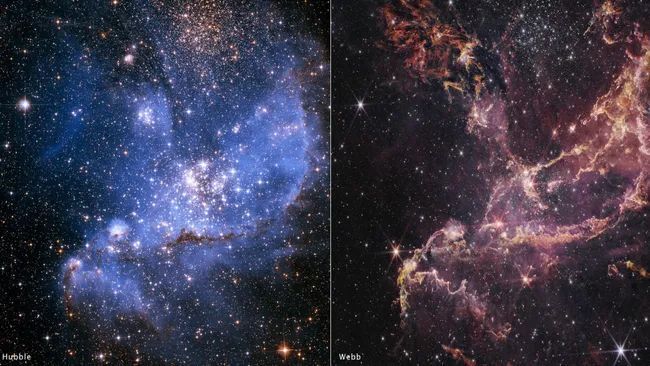News
Space photo of the week: James Webb and Hubble telescopes team up to solve the planet's "impossible" mystery
The James Webb Telescope has recorded a new observation of a star cluster called NGC 346. The results shed light on how, when, and where planets formed in the early Universe.
This mystery arose more than 20 years ago when the Hubble Space Telescope spotted the oldest known planet, which was formed earlier in the history of the Universe than scientists had thought. To find out more, scientists sent the James Webb Telescope to confirm the existence of long-lived planet-forming disks in NGC 346, Live Science reports.
Stars are known to form in large clouds of gas and dust called molecular clouds. The remaining gas and dust gather in disks around the stars. Planets, in turn, are formed from these disks.
Scientists believed that early stars did not have planets due to a lack of heavier elements, such as carbon and iron, which are formed as a result of the nuclear fusion of stars and the death of supernovae. They believed that these heavier elements were necessary for the planet-forming disks to exist long enough to form planets.
But 20 years ago, Hubble discovered a massive planet orbiting an ancient star in the M4 globular cluster, which lacks heavy elements. The exoplanet is about 13 billion years old, suggesting that planets may have formed earlier in the history of the universe than scientists thought. However, astronomers were not sure how it was formed at such an early stage in the history of the Universe.
Therefore, they used the James Webb Telescope, which, with its unprecedented sensitivity and resolution of the near-infrared spectrograph and the mid-infrared instrument, confirmed the existence of long-lived planet-forming disks in NGC 346.
In other words, the James Webb Telescope image confirmed Hubble's result, and scientists suggested that the lack of heavy elements slows down the star's ability to disperse its planet-forming disk, thus giving planets more time to form.
There is another theory, which is that the initial gas cloud from which the star is formed may be larger, leading to a more massive disk that lives longer.
Only verified information is available on the OBOZ.UA Telegram channel and Viber. Do not fall for fakes!




























